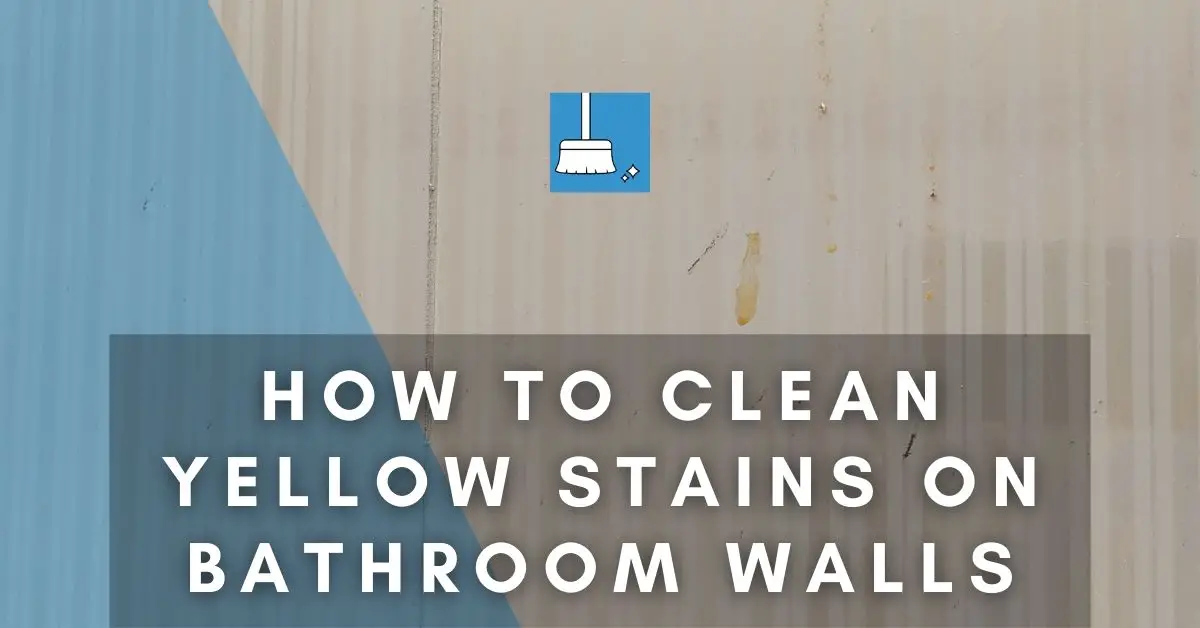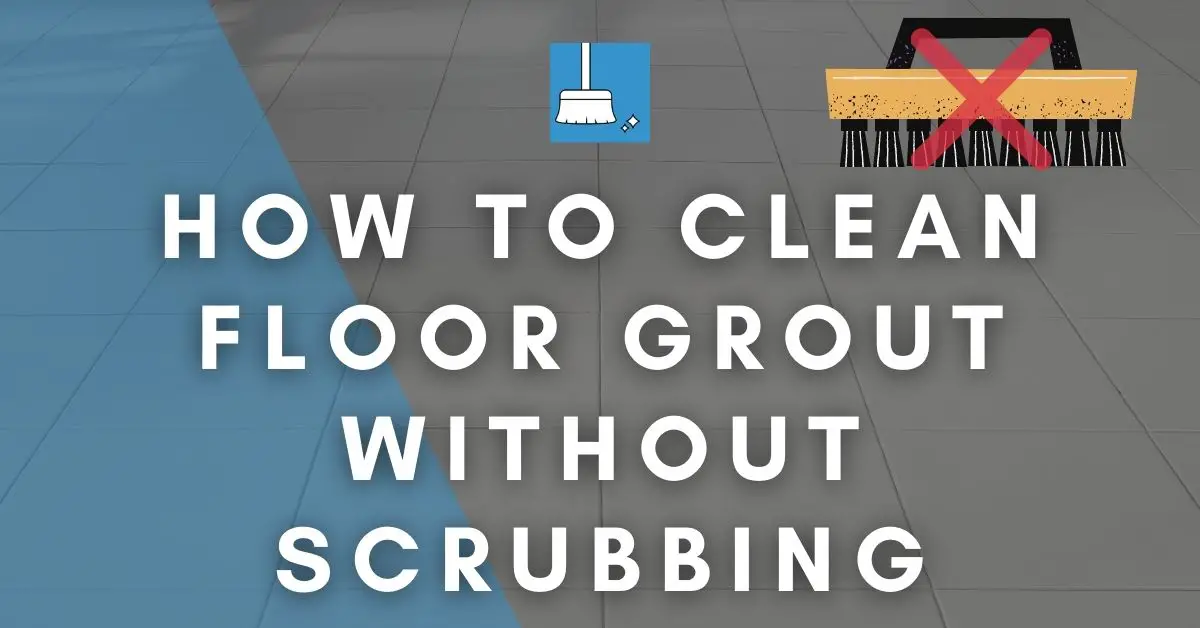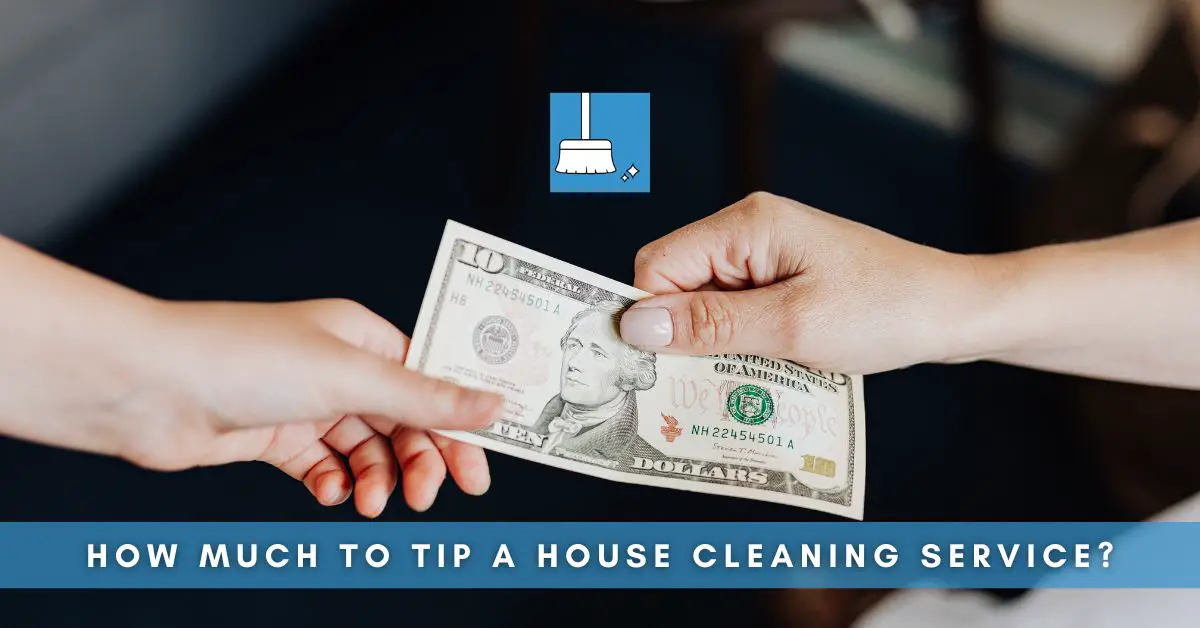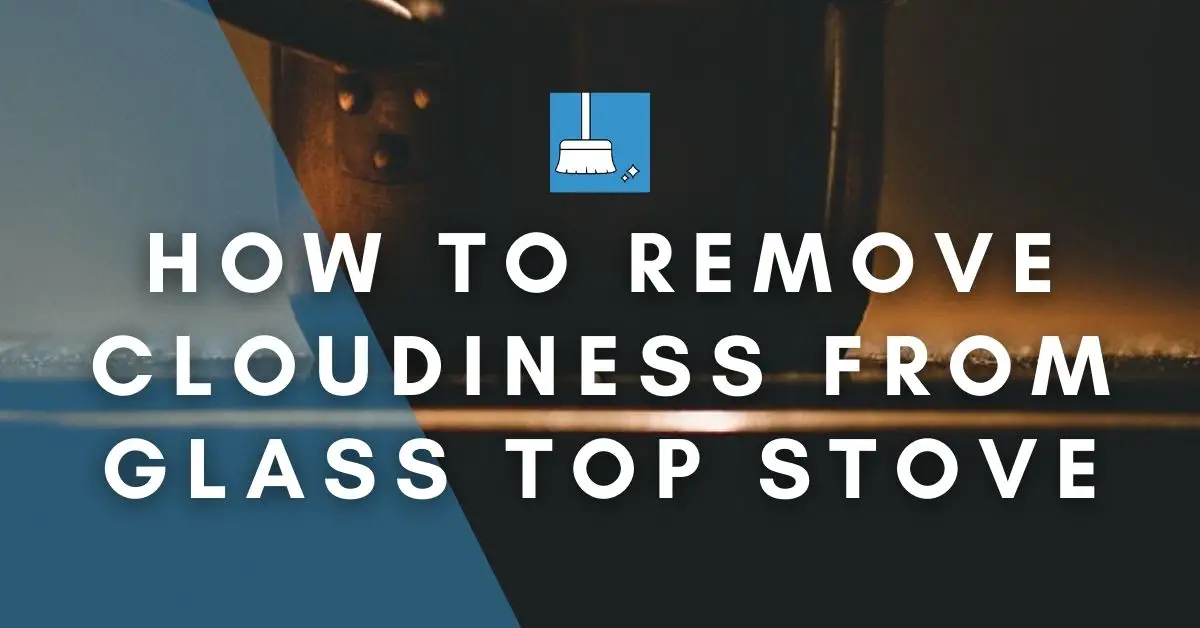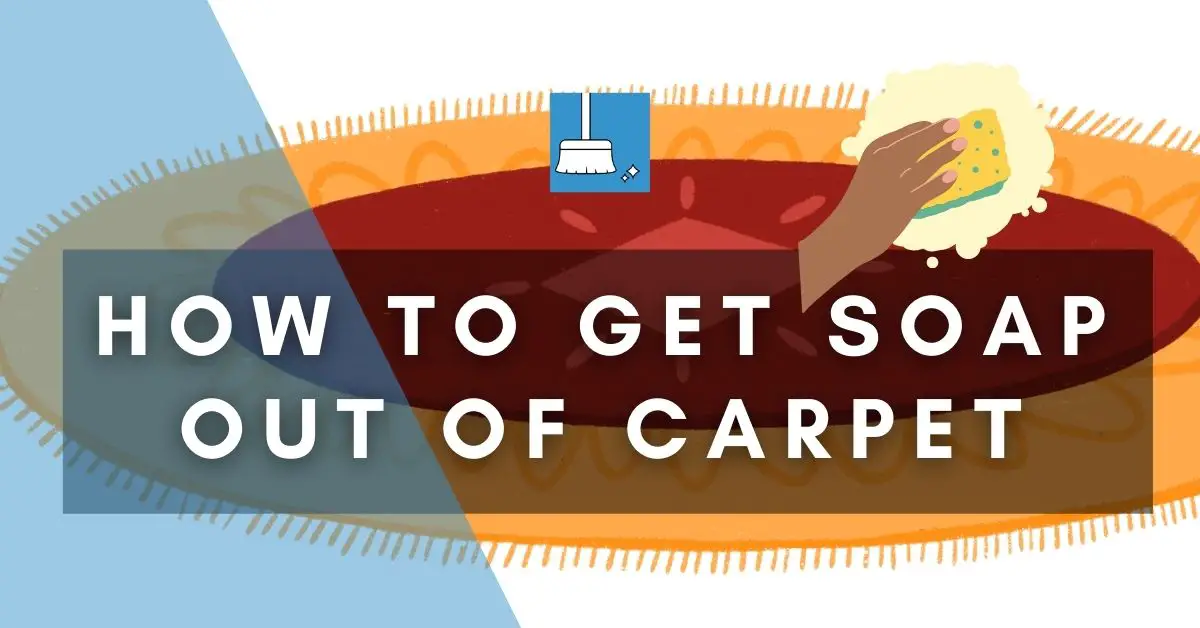No matter how clean you try to keep your bathroom, some things tend to pop up that confuse you. One of these things is the mysterious yellow stains that show up on your bathroom walls, leave those ugly-looking streaks, and make them sticky.
It is important that you fix the source of the yellow stains before cleaning to prevent the stain from returning. You can do this by fixing ventilation in your bathroom, removing rust from leaking pipes, changing old, decayed pipes, etc.
Whatever material your bathroom wall is painted or is made of ceramic tile, or marble, any of the methods in this cleaning guide will be effective in removing the yellow stains on your wall.
What Are These Yellow Stains on Your Bathroom Walls?
The yellow stains or streaks on your bathroom walls could be caused by a variety of
reasons.
Moisture
The level of moisture or humidity of your bathroom could be drawing out contaminants to the surface of the paint on your walls. This would leave yellow-ish marks on your bathroom walls.
Heat & Smoke
Gas heat and cigarette smoke tend to leave residue on walls. When wet, this residue can run down the walls and form a yellowish color.
Water Discoloration
Water could be discolored from running through rusty, old pipes in your home’s plumbing system. The water may leave damp spots on your wall that will attract mold and mildew.
These are three possible causes of what could be causing those unattractive yellow
stains, but it could be something else too.
Hair Dye
If you ever used Yellow/golden air dye, it might have left stains on your bathroom walls. It is easy to clean hair dye from bathroom walls.
How to Clean Yellow Stains on Bathroom Walls (7 Methods)
Method 1: Cleaning with a Soapy Solution
Note: This method is especially preferred and more effective for yellow stains that are fresh, not too old, or minimal.
YOU’LL NEED
1- Warm water
2- Liquid dish soap
3- Bucket
4- Sponge
5- Paper towels
6- Soft-bristled brush
STEPS
STEP 1: Mix 3 cups of warm water with 1 tbsp of liquid dish soap in a bucket.
STEP 2: Apply the solution to the walls with a soft sponge.
STEP 3: Scrub the entire wall gently with the soft-bristled brush focusing especially on the stains.
STEP 4: Scrub (gently) again with warm water. Wipe away the excess soapy solution and water with paper towels.
The yellow stains should be gone if they were slight or were not on the wall for long.
Method 2: Cleaning with bleach
Note: This method should preferably be used for cleaning yellow stains on tiled or marble bathroom walls and not for painted walls. This is because it may damage or fade the paint.
YOU’LL NEED
1- Bleach
2- Warm water
3- Soft bristle brush
4- Sponge
STEPS
STEP 1: Mix 1 cup of bleach with 1 gallon of warm water in a bucket.
STEP 2: Use a soft sponge to apply the bleach solution to the walls.
STEP 3: Allow the bleach solution to sit on the walls for 10-15 minutes to give it time to work on the stains.
STEP 4: Scrub the walls thoroughly with the brush, focusing on the yellow stains.
STEP 5: Rinse the walls with warm water while scrubbing the walls lightly.
Method 3: Cleaning with Borax
Note: The high alkaline nature of Borax makes it a highly effective agent in cleaning and disinfecting surfaces. However, it is preferable that you use it on tile and marble surfaces only.
YOU’LL NEED
1- Safety glasses, nose mask, gloves
2- Rag/Cloth
3- Warm water
4- Bowl
5- Borax powder
6- Clean cloth
STEPS
STEP 1: Wear your protective gear.
STEP 2: Dampen your rag or cloth with warm water and dip it in a bowl of pure borax powder.
STEP 3: Use the cloth to rub the tiles thoroughly until the yellow stains fade away.
STEP 4: Use a clean cloth dipped in warm water to wipe the walls and remove all traces of the borax and stains.
Method 4: Cleaning with Toothpaste
Note: Toothpaste is a mild abrasive as it is usually made with baking soda, which is a key ingredient in removing dental plaque. It is this abrasive nature that makes it so effective in removing various types of stains on surfaces. It can be used on bathroom walls of different materials, whether paint, ceramic tile, or marble
YOU’LL NEED
1- Clean Cloth/Rag (2)
2- Warm water
3- Toothpaste
4- Soft-bristled brush
STEPS
STEP 1: Wipe your walls with a cloth or rag that is dampened with warm water.
STEP 2: Apply an even layer of toothpaste to the stained areas, ensuring that it covers the yellow stains properly.
STEP 3: Wait for 20 to 30 minutes, then use a soft-bristled brush to lightly scrub the areas.
STEP 4: Wipe your wall clean with a clean cloth and warm water.
Method 5: Cleaning with Vinegar
Note: Vinegar is one of the best natural cleaners, with its acidic property that prevents the growth of mold, mildew, bacteria. It is able to cut through mineral deposits and water stains, making it extremely powerful and versatile
YOU’LL NEED
1- Safety glasses, nose mask, gloves
2- White vinegar
3- Warm water
4- Spray bottle
5- Sponge
6- Clean cloth (2)
7- Baking soda
8- Soft-bristled brush
STEPS
STEP 1: Mix a cup of white vinegar with warm water, and pour the solution into a spray bottle.
STEP 2: Spray it thoroughly on the yellow stains, and let it sit for 5 minutes.
STEP 3: Scrub gently with your sponge and then wipe with a cloth and warm water.
STEP 4: For stubborn or old stains, make a more effective paste of vinegar, water, and baking soda.
STEP 5: Apply this paste to the stained areas, leave it to sit for 5 minutes, and scrub with your soft-bristled brush.
STEP 6: Wipe with a clean cloth and warm water.
Always use a natural distilled White Vinegar for general cleaning purposes.
Method 6: Cleaning with Magic Eraser
Note: This method is suitable to work on bathroom walls made of different materials, be it paint, tile or marble. However, it may not be sufficient to remove the yellow stains completely by this method alone, therefore, this method can be used as a prep cleaning for any other method in this guide
YOU’LL NEED
1- Warm water
2- Magic eraser
3- Clean cloth
STEPS
STEP 1: Wet your walls with warm water.
STEP 2: Dampen your Magic eraser with warm water and squeeze it.
STEP 3: Scrub the yellow stains thoroughly with the magic eraser and rinse the wall properly with warm water and a cloth.
Method 7: Cleaning with CLR Bath & kitchen cleaner
Note: The acidic nature of CLR makes it unsuitable for painted bathroom walls, as it may damage the paint if left for too long. It is preferred for use on tile and marble walls, with proper precaution and attention.
YOU’LL NEED
1- Safety glasses, nose mask, gloves
2- CLR
3- Bowl/bucket
4- Scrub brush
5- Warm water
6- Clean cloth
STEPS
STEP 1: Wear your protective gear and turn on the bathroom fan for extra ventilation against the fumes. It is important to ventilate.
STEP 2: Mix one cup of CLR with one cup of water in a bowl or bucket.
STEP 3: Use the scrub brush and a bowl to apply the CLR solution to your walls, especially the stained areas.
STEP 4: Let the cleaner sit for a minute (max 2 mins), and then wipe with a clean cloth and warm water. Wipe your entire bathroom wall properly.
Frequently Asked Questions (FAQs)
How can I prevent yellow stains on my bathroom wall?
If you have determined that the issue is the ventilation and moisture in your bathroom, it is easy to fix.
You should install bath fans that are sized according to the volume of the bathroom so that they can make a minimum of 8 air exchanges per hour.
The fans should run while you bathe and for 30 minutes afterward to clear the moisture and humidity.
What causes bathroom walls to sweat?
Bathroom sweat is the condensation in the bathroom from water droplets forming on the windows, walls, and other surfaces when you bathe and from when the warm, damp air in the bathroom is cooled by these cold surfaces.
Warm air holds more moisture, and this results in heavier condensation, which is known as the ‘sweat’.
How do you stop condensation on walls?
To prevent condensation, it is important to open the bathroom windows and turn on your bathroom fans. Wet surfaces attract moisture, so you should wipe them to get rid of the excess water.
Also, vinegar is useful as a preventative agent to prevent mold, bacteria, and mildew from growing on surfaces.
You can spray the vinegar solution over the tiles and bathroom surfaces after taking a bath to keep your bathroom well-maintained and clean.
Conclusion
There you have it! Those ugly yellow stains should not become a permanent sight in your bathrooms, since now you know the right methods to tackle them. The methods shown are tried and tested.
If you have yellow stains on your toilet seats, here is a guide to tackle them.

